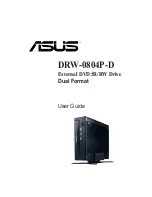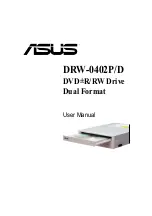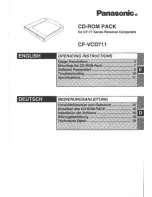
VLT
®
6000 HVAC
156
MG.60.B1.02 - VLT is a registered Danfoss trade mark
■
■
■
■
■
Aggressive environments
In common with all electronic equipment, a VLT
frequency converter contains a large number of
mechanical and electronic components, all of which
are vulnerable to environmental effects to some
extent.
The VLT frequency converter should
not therefore be installed in environ-
ments with airborne liquids, particles or
gases capable of affecting and damaging the elec-
tronic components. Failure to take the necessary
protective measures increases the risk of stoppages,
thus reducing the life of the VLT frequency converter.
Liquids can be carried through the air and condense
in the VLT frequency converter. In addition to this,
liquids may cause corrosion of components and
metal parts.
Steam, oil and salt water may cause corrosion of
components and metal parts.
In such environments, equipment with enclosure
rating IP 54 is recommended.
Airborne particles such as dust particles may cause
mechanical, electrical or thermal failure in the VLT
frequency converter.
A typical indicator of excessive levels of airborne
particles is dust particles around the VLT frequency
converter fan.
In very dusty environments, equipment with
enclosure rating IP 54 or a cabinet for IP 00/20
equipment is recommended.
■
■
■
■
■
Calculation of resulting reference
The calculation made below gives the resulting
reference when parameter 210
Reference type
is
programmed for
Sum
[0] and
Relative
[1], respectively.
External reference is the sum of references from
terminals 53, 54, 60 and serial communication. The
sum of these can never exceed parameter 205
Max.
reference
.
External reference can be calculated as follows:
Res. ref. =
(Par. 205
Max. ref. -
Par. 204
Min. ref.
) x Par. 211-214
Preset ref.
+ External ref. + Par. 204
Min. ref.
+ Par. 418/419 Setpoint
100
External reference x Par. 211-214
Preset ref.
Par. 210
Reference type
is programmed =
Sum
[0].
Ext. ref. =
Par. 310
Term. 53 Max. scaling -
Par. 309
Term. 53 Min. scaling
(Par. 205
Max. ref. -
Par. 204
Min. ref.
) x Ana. signal
Term. 53
[V]
+
Par. 313
Term. 54 Max. scaling -
Par. 312
Term. 54 Min. scaling
(Par. 205
Max. ref. -
Par. 204
Min. ref.
) x Ana. signal
Term. 54
[V]
+
Par. 316
Term. 60 Max. scaling -
Par. 315
Term. 60 Min. scaling
(Par. 205
Max. ref. -
Par. 204
Min. ref.
) x Par. 314
Term. 60
[mA]
+
serial com. reference x (Par. 205
Max. ref. -
Par. 204
Min. ref.
)
16384 (4000 Hex)
Par. 210
Reference type
is programmed =
Relative
[1].
+ Par. 204
Min. ref.
+ Par. 418/419 Setpoint (only in closed loop)
Res. ref. =
100
(only in closed loop)
In environments with high temperatures and humidity,
corrosive gases such as sulphur, nitrogen and
chlorine compounds will cause chemical processes
on the VLT frequency converter components. Such
chemical reactions will rapidly affect and damage the
electronic components.
In such environments, it is recommended that
equipment is mounted in a cabinet with fresh air
ventilation, keeping aggressive gases away from the
VLT frequency converter.
NOTE!
Mounting VLT frequency converters in
aggressive environments will increase the
risk of stoppages and furthermore considerably
reduce the life of the converter.
Before the installation of the VLT frequency converter,
the ambient air should be checked for liquids,
particles and gases. This may be done by observing
existing installations in this environment. Typical
indicators of harmful airborne liquids are water or oil
on metal parts, or corrosion of metal parts.
Excessive dust particle levels are often found on
installation cabinets and existing electrical
installations.
One indicator of aggressive airborne gases is
blackening of copper rails and cable ends on existing
installations.
















































